Silvia Tulli
Inferring Implicit Goals Across Differing Task Models
Jan 29, 2025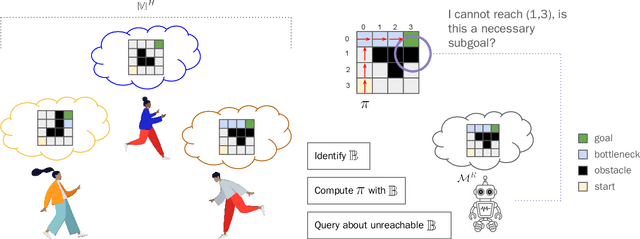
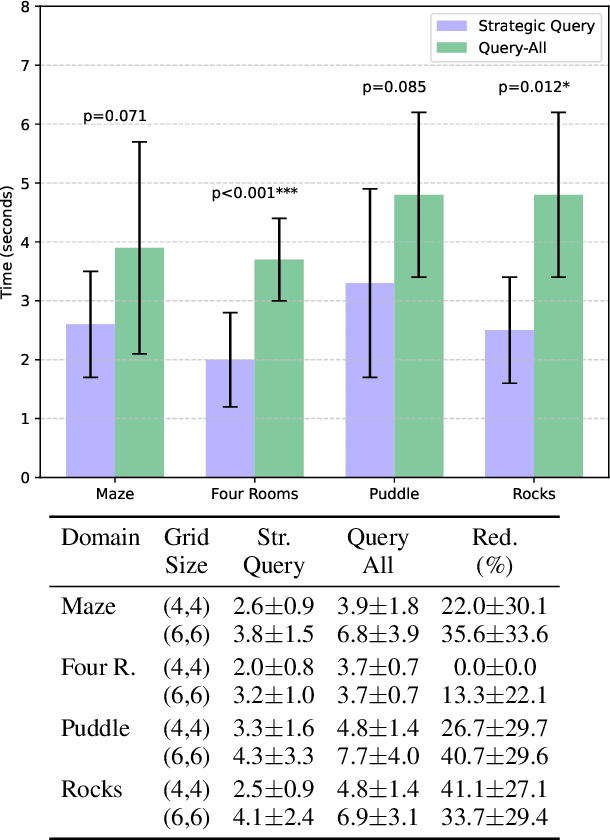
Abstract:One of the significant challenges to generating value-aligned behavior is to not only account for the specified user objectives but also any implicit or unspecified user requirements. The existence of such implicit requirements could be particularly common in settings where the user's understanding of the task model may differ from the agent's estimate of the model. Under this scenario, the user may incorrectly expect some agent behavior to be inevitable or guaranteed. This paper addresses such expectation mismatch in the presence of differing models by capturing the possibility of unspecified user subgoal in the context of a task captured as a Markov Decision Process (MDP) and querying for it as required. Our method identifies bottleneck states and uses them as candidates for potential implicit subgoals. We then introduce a querying strategy that will generate the minimal number of queries required to identify a policy guaranteed to achieve the underlying goal. Our empirical evaluations demonstrate the effectiveness of our approach in inferring and achieving unstated goals across various tasks.
Human-Modeling in Sequential Decision-Making: An Analysis through the Lens of Human-Aware AI
May 13, 2024

Abstract:"Human-aware" has become a popular keyword used to describe a particular class of AI systems that are designed to work and interact with humans. While there exists a surprising level of consistency among the works that use the label human-aware, the term itself mostly remains poorly understood. In this work, we retroactively try to provide an account of what constitutes a human-aware AI system. We see that human-aware AI is a design-oriented paradigm, one that focuses on the need for modeling the humans it may interact with. Additionally, we see that this paradigm offers us intuitive dimensions to understand and categorize the kinds of interactions these systems might have with humans. We show the pedagogical value of these dimensions by using them as a tool to understand and review the current landscape of work related to human-AI systems that purport some form of human modeling. To fit the scope of a workshop paper, we specifically narrowed our review to papers that deal with sequential decision-making and were published in a major AI conference in the last three years. Our analysis helps identify the space of potential research problems that are currently being overlooked. We perform additional analysis on the degree to which these works make explicit reference to results from social science and whether they actually perform user-studies to validate their systems. We also provide an accounting of the various AI methods used by these works.
A Practical Tutorial on Explainable AI Techniques
Nov 13, 2021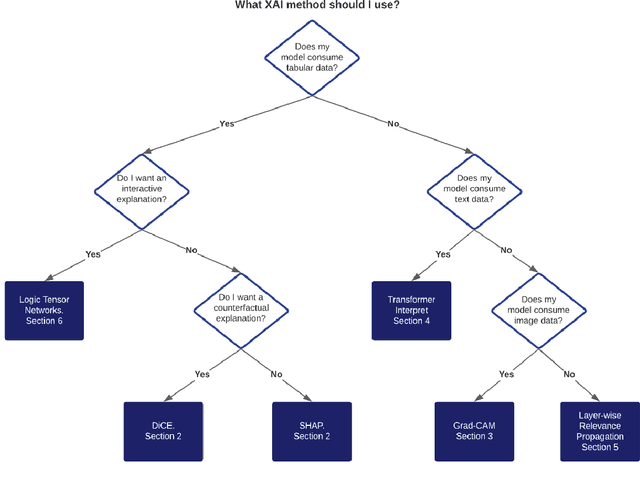
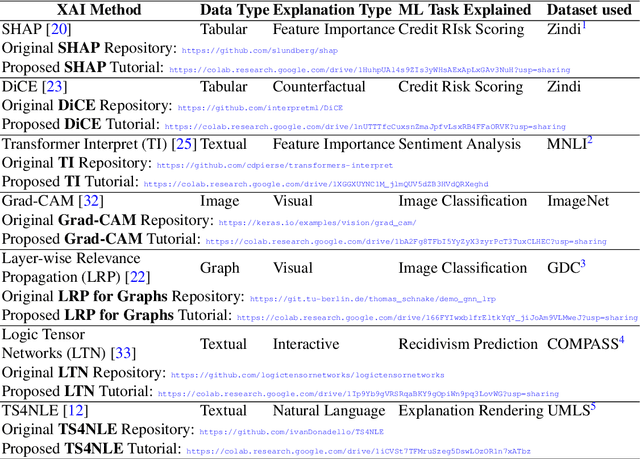
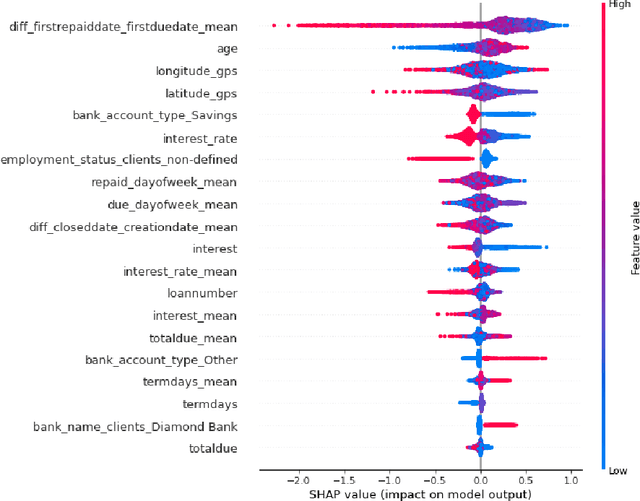
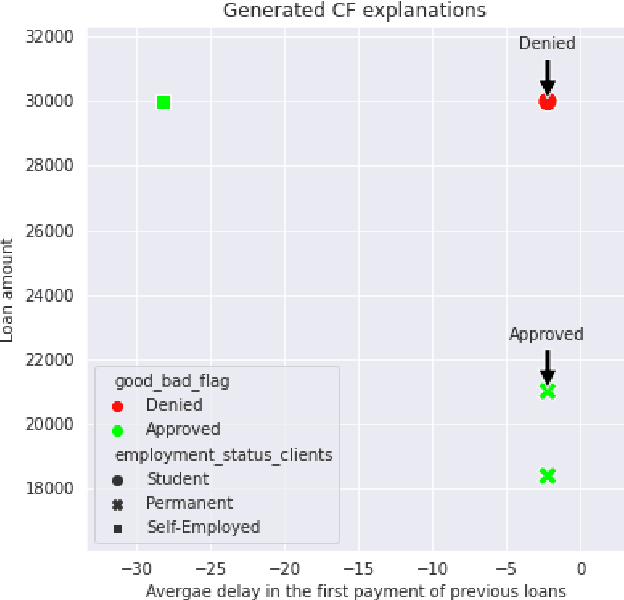
Abstract:Last years have been characterized by an upsurge of opaque automatic decision support systems, such as Deep Neural Networks (DNNs). Although they have great generalization and prediction skills, their functioning does not allow obtaining detailed explanations of their behaviour. As opaque machine learning models are increasingly being employed to make important predictions in critical environments, the danger is to create and use decisions that are not justifiable or legitimate. Therefore, there is a general agreement on the importance of endowing machine learning models with explainability. The reason is that EXplainable Artificial Intelligence (XAI) techniques can serve to verify and certify model outputs and enhance them with desirable notions such as trustworthiness, accountability, transparency and fairness. This tutorial is meant to be the go-to handbook for any audience with a computer science background aiming at getting intuitive insights of machine learning models, accompanied with straight, fast, and intuitive explanations out of the box. We believe that these methods provide a valuable contribution for applying XAI techniques in their particular day-to-day models, datasets and use-cases. Figure \ref{fig:Flowchart} acts as a flowchart/map for the reader and should help him to find the ideal method to use according to his type of data. The reader will find a description of the proposed method as well as an example of use and a Python notebook that he can easily modify as he pleases in order to apply it to his own case of application.
Explainable Agents Through Social Cues: A Review
Mar 11, 2020


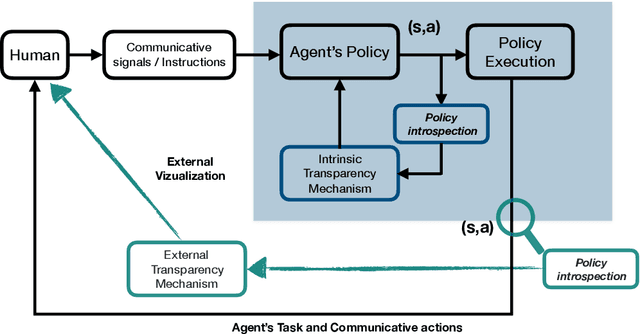
Abstract:How to provide explanations has experienced a surge of interest in Human-Robot Interaction (HRI) over the last three years. In HRI this is known as explainability, expressivity, transparency or sometimes legibility, and the challenge for embodied agents is that they offer a unique array of modalities to communicate this information thanks to their embodiment. Responding to this surge of interest, we review the existing literature in explainability and organize it by (1) providing an overview of existing definitions, (2) showing how explainability is implemented and how it exploits different modalities, and (3) showing how the impact of explainability is measured. Additionally, we present a list of open questions and challenges that highlight areas that require further investigation by the community. This provides the interested scholar with an overview of the current state-of-the-art.
 Add to Chrome
Add to Chrome Add to Firefox
Add to Firefox Add to Edge
Add to Edge